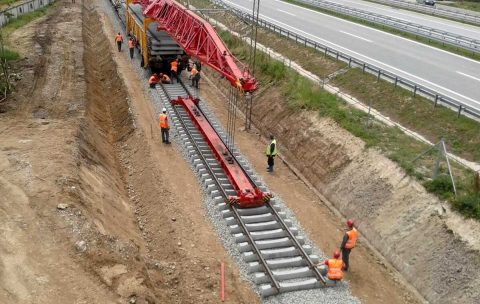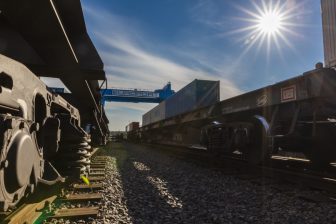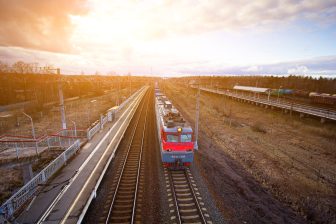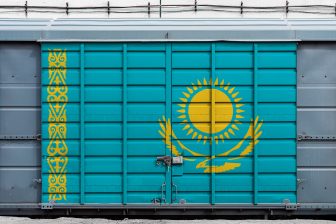
Serbia invests billions in railway lines to rest of Europe
The Serbian government has announced an investment of 3.5 billion Euros in its railway infrastructure. Various sections of the important railway lines to Hungary and Montenegro will be upgraded.
The 3.5 billion is part of the 14 billion Euros dedicated under the Serbia 2025 national investment programme. Rail freight plays an important role in Serbia, as it connects the landlocked country to the Adriatic coast, and to the developing railway network of Hungary.
Belgrade-Bar
On the vital Belgrade-Bar line, which connects the country’s capital to the main port of Montenegro, several modernisation projects are planned. The 208km Valjevo – Vrbnica section of this line will be modernised, and an integrated traffic control centre should be build.
This work will be financed with 57·5 million Euros from the national budget and a 172·5 million Russian loan supported by Russian Railways. This was agreed in a cooperation statement, signed by the counterparts in October 2019.
Belgrade-Budapest
Towards the north, major work is to be carried out on the railway line to Budapest. The Novi Sad – Subotica – Kelebia line is to be upgraded and double-tracked. This will be carried out by China Railway International Group and China Communications Construction Co, under a 943 million Euros programme with financing from Exim Bank of China.
The scheme includes modernisation of the Novi Sad, Vrbas and Subotica junctions, building 49 overpasses and underpasses, refurbishing nine stations and constructing a 1.6km viaduct in Vrbas. The route will be closed for 33 months from March 2020, with trains diverted to run via Bogojevo or Zrenjanin.
Line closures
The modernisation work on this line has been in the pipeline for a while. In 2014, Aleksander Vucic, the Prime Minister of Serbia (now president), said that the railway line would be fully modernised in 2017, but it was not until 2018 that the works actually started.
The track between Belgrade and Novi Sad (the two largest cities in Serbia) have been closed for modernisation since 2018. Freight trains have been diverted via a single-track diesel line, resulting in delays of a few hours. This situation will last until 2021. The closure of the Novi Sad-Subotica section will last until the end of 2022.
Corridor X
The Budapest-Belgrade line is part of Corridor X, which connects Salzburg and Budapest with Thessaloniki and Sofia, among others via Serbia. Apart from the northern section, the stretch between Beograd and Niš will be renewed, along with the branches from Niš to Dimitrovgrad and Preševo.
Corridor X serves many parties for different reasons. It provides a reliable hinterland network for the south-European ports, which are now far from competitive to the north-European ports. However, for Central and Eastern European countries, the southern ports could be a good alternative if the rail infrastructure is indeed up to modern standards.
Chinese interest
Apart from regional interest, China is investing heavily in the network. The loans and investments all fit within the Belt and Road initiative (BRI), which in this part of Europe consists of a hinterland network from the Greek port of Piraeus, already in Chinese hands. A better connection to the Central and East European region from this port is in their direct interest.






Idu izbori 😎